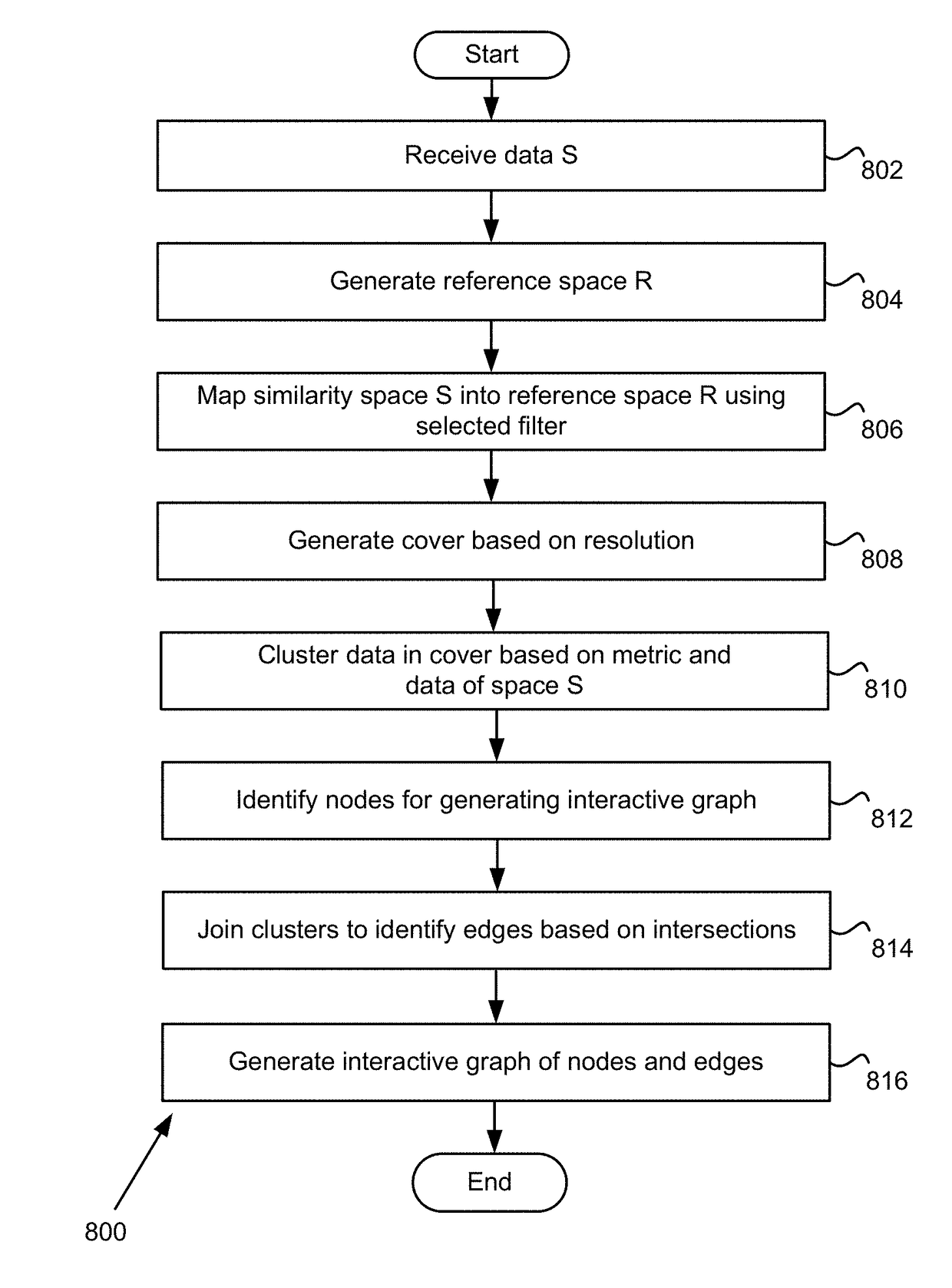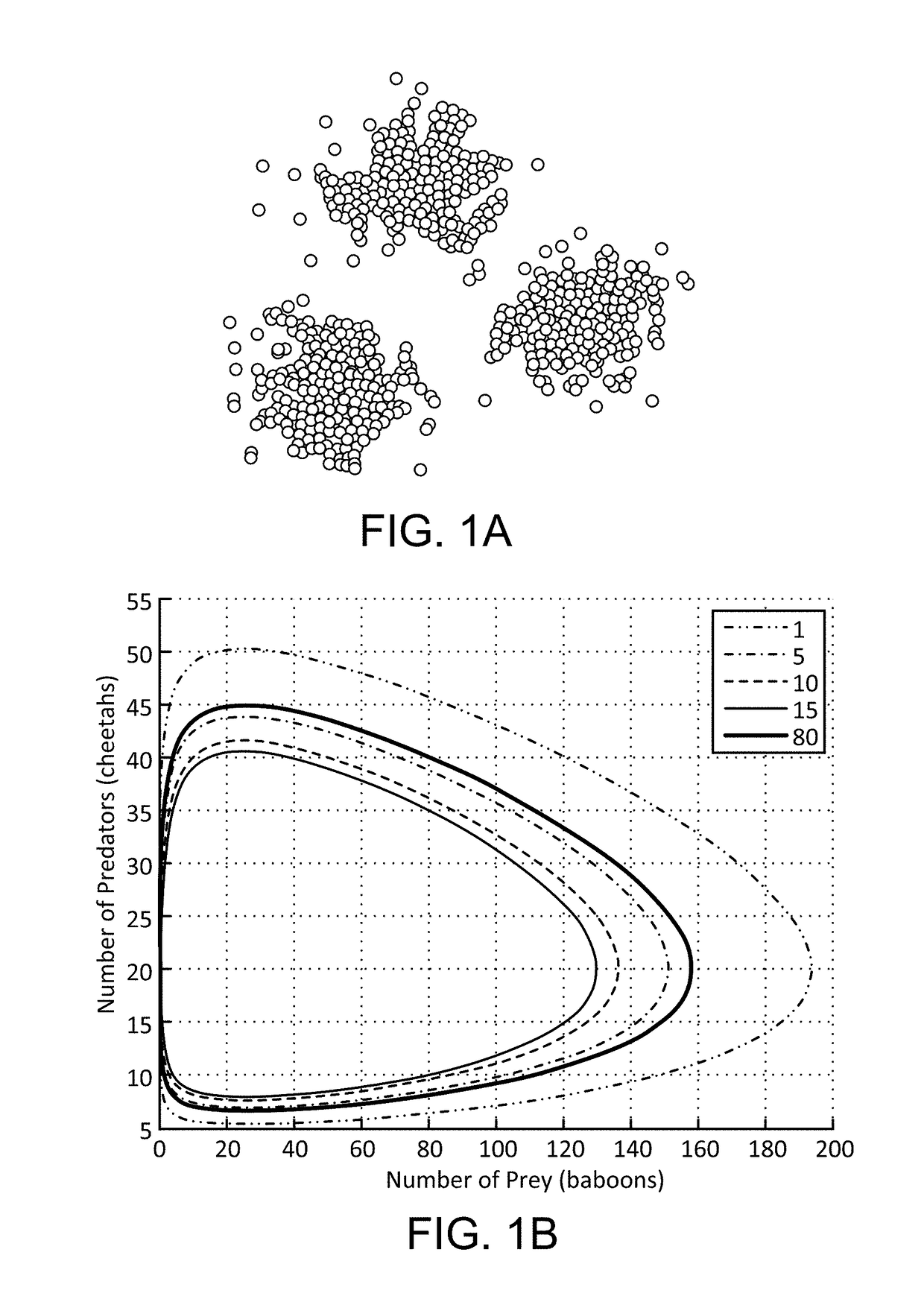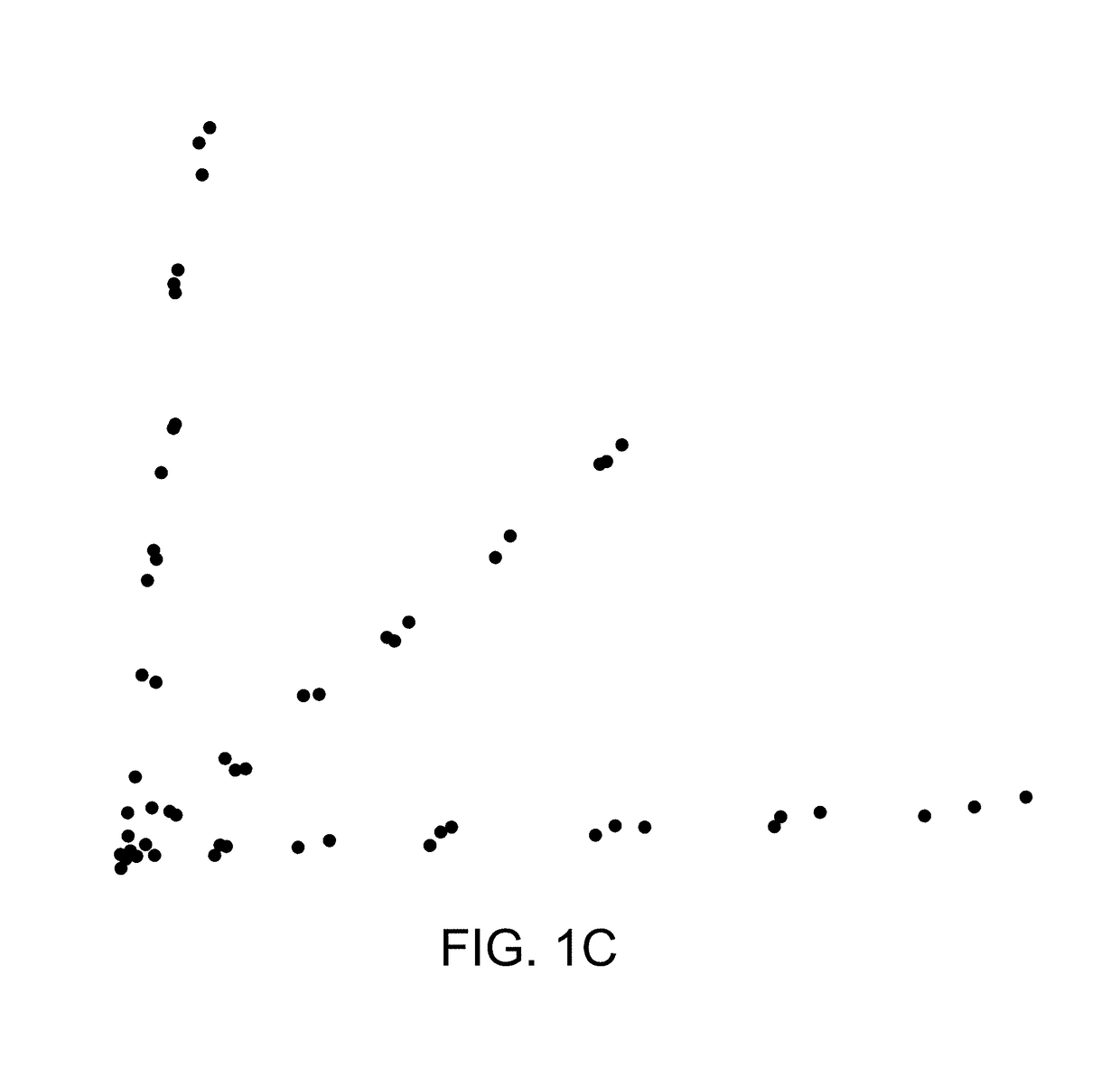Dimension grouping and reduction for model generation, testing, and documentation
a technology of dimension grouping and reduction, applied in the field of data analysis grouping of data points, can solve problems such as particularly problematic for business users
- Summary
- Abstract
- Description
- Claims
- Application Information
AI Technical Summary
Benefits of technology
Problems solved by technology
Method used
Image
Examples
Embodiment Construction
3 (FIG. 19C) extends F1 (FIG. 19A).
[0339]Partition P on S is subordinate to F1 if and only if every element of P is in F1. The circled partition P1 of F4 depicted in FIG. 19D, is an example of a subordinate partition {e.g., {a,b,c},{d,e},{f}, and {g}} to F1.
[0340]Singletons(S) are denoted as the partition formed by taking {{x}|x in S}. That is, in the example in FIG. 19D, Singletons({a, b, c, d, e, f, g})={{a},{b},{c},{d},{e}, {f},{g} }. This is the same as the set of leaves of an atomic forest. Let U(P), where P is any collection of subsets of S, denote the union of all the elements of P. U(Singletons(S))==S.
[0341]Partition P′ on S is coarser than another partition P on S if and only if every element x′ in P′ is the union of elements x in P. In various embodiments, every partition on S is coarser than Singletons(S), and {S} is coarser than every partition on S. For instance, {{a,b,c},{d,e,f},{g} } is a coarser partition than {{a,b},{c},{d,e},{f},{g} }.
[0342]FIG. 20 is a block diagr...
PUM
 Login to View More
Login to View More Abstract
Description
Claims
Application Information
 Login to View More
Login to View More - R&D
- Intellectual Property
- Life Sciences
- Materials
- Tech Scout
- Unparalleled Data Quality
- Higher Quality Content
- 60% Fewer Hallucinations
Browse by: Latest US Patents, China's latest patents, Technical Efficacy Thesaurus, Application Domain, Technology Topic, Popular Technical Reports.
© 2025 PatSnap. All rights reserved.Legal|Privacy policy|Modern Slavery Act Transparency Statement|Sitemap|About US| Contact US: help@patsnap.com



